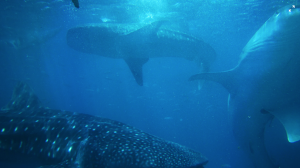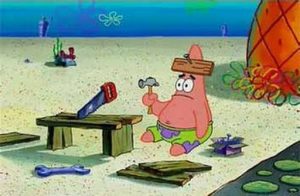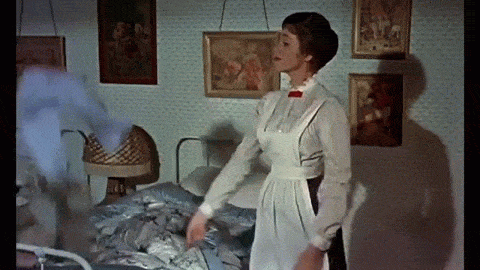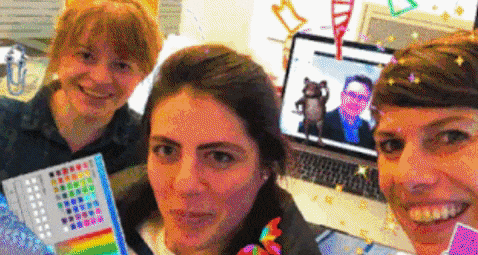Questioning the questions in the EMBL Design Lab
You know what it’s like being new in the job. Every time I start, I’m thinking about making my boss happy while completing tasks without angering the stakeholders (which also wouldn’t help with the former). You feel like plankton in a shark tank. You go with the flow, and you don’t even dream of controlling it one day.

When I look back at my plankton phase at EMBL, it’s hard to believe how quickly that turned into doing an illustration for Nature and my mum hanging it on the fridge. Much quicker than that I felt like part of the incredibly passionate team, and experienced what it is to be guided and mentored rather than supervised. In such an atmosphere, you soak up new ways of thinking, like a sponge, and that’s what I want to talk about in this blog post.
It was one of my first weeks at EMBL. There was one particular project, with a lot of room for creativity and thus room for many mistakes. Discussions with stakeholders were mostly remote, and their opinions very direct. Tabea was very supportive, but sooner or later you need to start swimming by yourself. And although you know you can always get the help you need, you’ve just not learned to ask for it yet.

I was staring at an unfinished email that was meant to, yet again, explain my own decisions, which I didn’t trust. I had already done a few revision rounds, with three colour palettes. I was running in circles with shapes, forms and fonts. I wasn’t only out of control with the flow; I also felt like it was leading me and the project nowhere.
I felt like I’d considered every possible variation of the font and colour, form and positioning, styles and shadows, round shapes, sharp edges, loose kerning, no kerning, you name it. I knew what colour I preferred. I also knew our stakeholders hated it. I knew their favourite font; I knew the least favourite one. It felt like the only question left would be their shoe size. A few days into the process, Tabea found me in front of a wall covered with countless versions of the visual.
She put a Curcuma chai drink on my desk, turned off my screen, and asked:
“What difference in the world do we want this visual to make?”
You may laugh at first. It sounds like a big existential question. After all, it’s hard to imagine curing cancer or feeding the hungry with Photoshop. But that was, indeed, a real life-changer for me.
I stopped asking “Do you prefer blue or green?”, or “What do you think would feel better against your existing visuals?”.
While these remain relevant questions, it wasn’t the right time to ask them. It was like assembling jigsaw puzzles but starting not from the edges but the centre. With the wrong picture in front of you.
Instead, I’d ask “Do you want this visual help you win a grant, get more followers on Twitter, or both?”.
It would be a challenge to find people with more love for questions than scientists. We quickly came up with specific goals this project was to achieve. Everything fell into place. The critical feedback started making sense, and my explanations could finally relate to a context that matters to both sides of the table. Tabea has often been untangling processes, but that lesson was particularly valuable. I know I’ve sometimes been asking this question somewhere between the lines, but making it a conscious step in the process made a huge difference.
We have different roles and expertise but having a sense of a shared goal, that we are all aware of, gets stakeholders excited and engaged. Asking first about the impact also helps us to evaluate our work and set metrics that matter. After all, how could you know whether you created the right thing without first asking what you wanted that thing to do?

Indeed, diving into an app development project needs different tasks and processes to be successful than having to retouch a portrait photo. After the big question, more specific questions follow. After every “How do we get more people to sign up for that conference?” there is a “Where should I place the button so people can find it?” and “What colour should the button be, so people are not afraid to click it?”.
The more precise that first question is, the easier it is to think of useful follow-ups.
So what questions has Design Lab – together with colleagues from EMBL teams, research groups, and sites – recently come up with, you ask?
- How do we make Heidelberg locals come and listen to a talk about the importance of vaccination? What image do we choose for the poster? How do we make injection needles look less scary?
- How do we help new group leaders attract young talent? How do we help them get more followers on Twitter? What visual do we design, so they click on the link?
- How do we help EMBL’s brand strengthen its outlook? How can we make EMBL look more coherent across its sub-brands and sites? What font and colours could support it? Could EMBL’s design past help futureproof its brand?
- How do we bring more people to that PhD seminar? How do we make more room on the poster for a ‘free pizza’ sticker?
- How do we attract new scientific talent to EMBL? How do we help EMBL scientists gain more recognition for their research? How do we win a Nature cover? How do we illustrate something nobody has ever seen before? Is it OK to retouch scientific images? How do we show the different stages of nuclear pore complex development?
- Sweet potato fries or cabbage lasagne?
- How do we stop the spread of antibiotic resistance? How do we make people read an article that says that taking too many painkillers may not be a good idea?
- How do we help EMBL’s researchers communicate their findings? How do we make more scientists aware of Design Lab and the help we can offer? How do we structure a Design Lab tour? How do we make the collaboration process exciting and efficient?
- How do we get the public to see the scope of the work EMBL does? Who’s our audience? Where do we want to reach them? How do we pack more than 40 research groups into one publication?
- Why are there no beans in the coffee machine when I have three minutes until the morning team huddle?
Let’s not make it seem like we spend our days only asking questions, though. We brainstorm, draft, look for the right vector curve and make sure we get the print presets right. We use the same tools, techniques and standards that design agencies do. There are things, however, that make our daily practice quite unique.
We learn about groundbreaking discoveries before they get published. We also get to hear about them from the scientists themselves, sipping tea by the benches where it happened.
With huge discoveries comes significant responsibility, though. When you’re a designer at EMBL, drawing a DNA helix twisting the wrong way is like misspelling ‘detail-oriented’, and there are many critical mistakes you can make even if you’re only asked to retouch an image. But we’re not afraid to take on challenging projects. Tabea makes sure our tiny, tight-knit design team feels like a small family, and in such an atmosphere of honest openness, there is no room for fear other than the fear of a poor server connection.
On top of that, we spend hours watching YouTube explainer videos, proudly renew our library loan of Biology for Dummies every month, and visit scientists in their labs. They teach us the secrets of life that haven’t yet been written in textbooks; we show them how to communicate these to the world visually, so the world listens. And on the listening thing, we’re lucky to work together with colleagues across editorial, media, core content, digital and outreach teams. But that part deserves a whole new blog post, so let me leave it there.

P.S. Stay tuned for more blog posts from us as we guide you through our daily challenges. Follow us on Instagram @designlab_embl and in the meantime, spread the news because we’re looking for a designer to join our awesome Design Lab in Heidelberg!